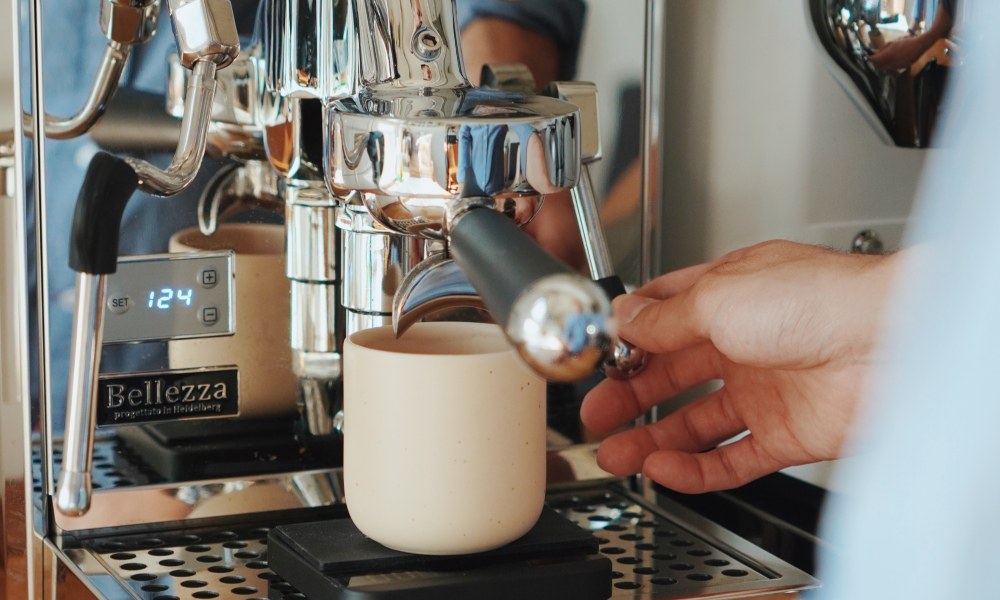How home coffee consumers started taking over the industry
Ashe Samuels talks to Jason Malcom to explore the different ways in which home coffee consumers are taking over the industry
In many ways, the way in which people consumed coffee was knocked completely off-kilter by the pandemic. Most obviously, it forced everyone to start brewing coffee at home; a trend that hasn’t gone anywhere despite shops and restaurants reopening.
According to the National Coffee Association’s annual report, 83% of past-day coffee consumers reported having a coffee at home – up 4% since January 2020. And while out-of-home consumption has grown since January 2021 (from 31% to 35%), it is still considerably lower than pre-pandemic levels in January 2020 (41%).
This shows how coffee consumption is booming in general. However, it’s worth recognising that at-home consumption has been a significant driver in post-pandemic years.
Some argue that the convenience of at-home coffee consumption, combined with the rise in remote work, is appealing to people because it largely eliminates the need for people to leave their homes on a regular basis.
Others believe that drinking coffee at home allows consumers to more actively engage with what they are drinking – something that people have prioritised more since the pandemic.
“I think societally, since Covid-19, how we spend our time and how we spend our lives – it’s just evolving,” says Jason Malcom, director of business development and global sales at Espresso Parts. “People are after more experiences.”
This happened at a time when social media became increasingly influential in consumers’ lives, particularly among young people. During the pandemic, when many sought ways to connect with others, engaging with an online coffee community was a significant factor driving the at-home segment’s growth.
“Someone may have introduced you to a Chemex, for example; probably through a YouTube video or social media – not just as a coffee that you’re consuming, but as an experience,” says Jason. “I think more and more people are after those types of things in their lives – they want a little more out of everything.”

Home coffee consumers appreciate the process
In many instances, espresso-based beverages are what drove consumers out of their homes. However, in response to the substantial increase in at-home consumption, manufacturers started to introduce a variety of coffee machines with different capabilities – suddenly allowing consumers of different skill levels to make espresso at home.
“Covid played a really big part in this,” says Jason. “We saw a lot of diversification in product portfolios and consumer-based products in coffee. If you look at just one home coffee category, how many options are there – espresso machines, grinders?”
Jason suggests that this can impact a consumer’s experience when they are just starting out on their coffee journey. “It’s really difficult for someone newer to coffee just to click on any website to know what to do,” he says. “Social media plays a big part in that.”
For some, however, the shift from café to home provided an opportunity to explore the more iconic and beautiful elements of making coffee. More than just a quick pitstop to fulfil their caffeine needs, the pandemic allowed consumers the time to appreciate the process.
As such, many have discovered products like the Bellezza Chiara, which honour the heritage of Italian manufacturing while delivering a compact machine that doesn’t take over a small kitchen. Alternatively, consumers looking for a more powerful machine could turn to Bellezza’s dual boiler Francesca.
Essentially, since the beginning of the pandemic, consumers have shown a willingness to invest in their home setups for a long-term solution to brewing high-quality coffee at home – and manufacturers have met that demand with a range of suitable machines.
Online and physical spaces
And with technology facilitating greater connectivity, coffee drinkers can now influence others from their own four walls – reaching other home consumers, or people within the industry.
“The US sector is largely driven by consumer activity,” Jason says. “There are content creators that have never participated in making coffee behind the bar – they started at home and they are influencing what’s happening in the market.”
“I see so many people in hospitality, food services, or cafes who are opening coffee shops – a lot of them are getting ideas from content they see from ‘amateur’ consumers.”
Indeed, as the market for home coffee consumption grows, there is an increasing opportunity for these “amateurs” to become involved in the industry. Indeed, “prosumers” are actively engaged in coffee – creating content, producing reviews, and even participating in elements of product development. In some cases, home consumers make a fully-fledged transition into the coffee industry.
“We see a huge amount of customers that are opening their first café or coffee business that were at-home coffee brewers,” Jason says. “They were professionals in other sectors and saw it as a passion – but wanted it to be more than that.”
“This fire is ignited at home,” Jason says. “I don’t see any slowdown happening from that in the next few years.”
Home consumption is already a vital part of the coffee industry. However, we’re increasingly seeing this consumer demographic expand beyond their traditional boundaries – whether in online or physical spaces. As such, these consumers are set to play a more significant role in the industry’s future.
New Ground Coffee
Want to read more articles like this? Sign up for our newsletter!







